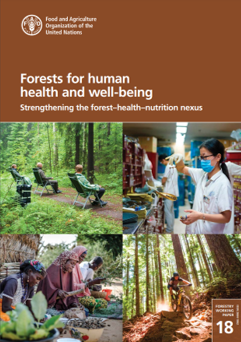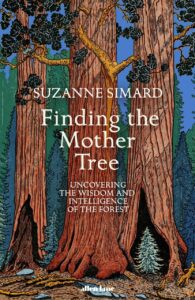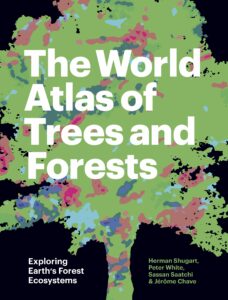 21st March marks the 12th annual International Day of Forests. On this day, the UN encourages countries around the world to celebrate and raise awareness of the importance of forests, through events, activities and campaigns large and small.
21st March marks the 12th annual International Day of Forests. On this day, the UN encourages countries around the world to celebrate and raise awareness of the importance of forests, through events, activities and campaigns large and small.
The theme of this year’s International Day of Forests is ‘Forests and Health‘. This topic aims to bring attention to the myriad of ways in which forests are linked with human health – through provision of foods and medicines, by improving our physical and mental health, and by helping to keep global warming in check.
Key messages of International Day of Forests 2023
Forests are a vital source of food and nutrition
Nearly one billion people globally depend on harvesting wild food such as herbs, fruits, nuts, meat and insects for nutritious diets. In some remote tropical areas, the consumption of wild meat is estimated to cover between 60 – 80 percent of daily protein needs.
Forests are natural pharmacies
Around 50 000 plant species – many of which grow in forests – have medicinal value. Local communities use forest-derived medicines for a wide array of ailments and many common pharmaceutical medicines are derived from forest plants, including cancer-treating drugs from the Madagascar periwinkle and malaria medication quinine from cinchona trees.
Healthy forests protect us from diseases
Forests have traditionally served as a natural barrier to disease transmission between animals and humans, but as deforestation continues, the risk of diseases spilling over from animals to people is rising. More than 30 percent of new diseases reported since 1960 are attributed to land-use change, including deforestation.
Forests boost our mental and physical health
Spending time in forests increases positive emotions and decreases stress, blood pressure, depression, fatigue, anxiety and tension. Trees in cities also absorb pollutant gases from traffic and industry and filter fine particulates such as dust, dirt and smoke, which help shield urban populations from respiratory diseases.
Forests play a central role in combating the biggest health threat facing humanity: climate change
Healthy forests help keep global warming in check: forests contain 662 billion tonnes of carbon, which is more than half the global carbon stock in soils and vegetation. Forests and trees also help buffer exposure to heat and extreme weather events caused by climate change, which pose a major global health challenge. For example, trees properly placed around buildings cool the air and can cut air conditioning needs by up to 30 percent, also saving energy.
Forests are under threat and need our help
Ten million hectares – roughly the equivalent of 14 million football pitches – of forest were lost per year to deforestation between 2015 and 2020. Forest insects damage around 35 million hectares of forest annually. Fire affected approximately 98 million hectares of forest globally in 2015. Through forest-friendly policies and increased investment in forests and trees we can protect our planet and our health.
How to get involved
• Organise or join an existing event to celebrate and promote the role of forests in maintaining human health. Great ideas include forest walks, tree planting gatherings, forest-related art exhibitions and public talks or debates.
• Let the UN know about what you’ve been up to by emailing IDF@fao.org. If you send them your photos, they can also add them to this year’s gallery.
• Download the logo, banner or poster and share these to help get the word out about the 2023 International Day of Forests.
• Share your experiences on social media using the hashtag #IntlForestDay
Associated UN publications
 Forests for human health and well-being: Strengthening the forest-health-nutrition nexus
Forests for human health and well-being: Strengthening the forest-health-nutrition nexus
This publication examines the many linkages of forests and human health and offers recommendations for creating an enabling environment in which people can benefit from them. Designed for practitioners and policy-makers in a range of fields.
Further reading on forests
 Finding the Mother Tree: Uncovering the Wisdom and Intelligence of the Forest
Finding the Mother Tree: Uncovering the Wisdom and Intelligence of the Forest
No one has done more to transform our understanding of trees than the world-renowned scientist Suzanne Simard. Now she shares the secrets of a lifetime spent uncovering startling truths about trees: their cooperation, healing capacity, memory, wisdom and sentience.
 The World Atlas of Trees and Forests
The World Atlas of Trees and Forests
The earth’s forests are havens of nature supporting a diversity of life. Shaped by climate and geography, these vast and dynamic wooded spaces offer unique ecosystems that shelter interdependent webs of organisms. This book offers a beautiful introduction to what forests are.
Ancient Woods, Trees & Forests: Ecology, History and Management
From ancient times until today, trees and woods have inspired artists, writers and scientists. This inspiring book helps us to understand the web of connections relating to ancient trees and woodlands, and to offer techniques to ensure effective conservation and sustainability of this precious resource.
 A Forest Journey: The Role of Trees in the Fate of Civilization
A Forest Journey: The Role of Trees in the Fate of Civilization
Now in its third edition, this classic book provides comprehensive coverage of the major role forests have played in human life – told with grace, fluency, imagination, and humour. It has been named one of Harvard’s “One Hundred Great Books”.






